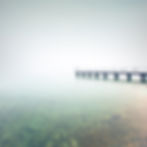Military Model Scene
Robin Buckland's
La Coupole...
...the V2 site at Wizernes, St Omer, France
One of two significant sites in the Pas de Calais which the Germans were building to be launch sites for the V2 missile. Both La Coupole and the other site at Eperleques were abandoned before they could go into service. Allied bombing disrupted their building programme and following the successful landings in Normandy, neither site went into action.
Just a short way from St Omer is Wizernes, where the site of La Coupole was being built in an old quarry. The name comes from the construction of a huge reinforced concrete dome, or 'cupola', which was built on the top of the hill above the quarry wall. The cupola is 6 metres thick and was not pierced in the allied bombing raids. It was built by laying a clay dome and then building the reinforced concrete over it. Once all was set, the clay was excavated from underneath it. The huge concrete dome would then have been the roof of a hexagonal assembly hall where the V2s would have been erected, fuelled and guidance system set before being taken out into the bas of the quarry where they would have been launched. Also built into the wall of the quarry would have been some 7 km of railway tunnels and sidings where the V2s would have been stored laying horizontally on rail cars.
When you arrive there is a large, free car park which takes up the floor of the old quarry. A museum building, with gift shop and ticket office marks your way in. An interesting exhibit hanging in the hall is a piloted V1, the Reichenberg. Having paid, the access ot the museum itself is through the tunnel of what would have been the way in for the trains, bringing in the missiles and all the other supplies. It makes for an impressive entrance, and the tunnel has a number of side tunnels which are now used as exhibition halls. One of them has been left as it was found, and it demonstrates just how they were built. In basic terms it is simple but staggering in execution. Two side excavations are made, leaving the rock between them to hold up the roof. Then concrete side wall are built, then the central pillar of rock is drilled through so roof supports are put in and the roof put in place, then the remainder of the central rock pillar is removed. When you are in there and see the scale of the whole thing it is quite breathtaking I think.
This entrance tunnel is fenced off further in, preventing access to the myriad of additional tunnels that remain incomplete and are unsafe for public access. A tunnel off to the right takes you to a lift, which takes you up to the space underneath the 'Coupole' itself which now houses the museum displays. On two levels there is lots to see, including models showing how the big V-weapon sites would have looked and worked, rocketry displays, a cinema and a complete V2 missile hanging from the roof. It is also interesting to see a 'hole' in the edge of the concrete cupola which had to be opened up to allow equipment in to excavate the space for the museum, and it illustrates that 6 metre thickness.
When you have finished with the various displays you make you way to the exit by going back to the lift, but when it gets back to the bottom, the doors open on the other side. You go through another tunnel, and turn right and you come into what would have been the hexagonal chamber where the missiles would have been prepared for launch. As you go in you are sure to be impressed again. The hall was started but never finished. The chamber was to be built in the same way as described above the other tunnels. On your left side, covered in chicken wire to prevent rock falls, is the central rock core, while on the right you see the concrete wall that just goes up. I don't know the height, but it looked like the side of a 5-storey building, with a couple of higher level supports that would have held the upper floors to the hall. Seeing the height of this and realising it is all built inside a hill is just an amazing bit of engineering. One of those things that you almost need to see it to believe it. Moving on, you find yourself back in the main entrance tunnel where you came in, so on route to make your way out via the gift shop.
I can only encourage you to make the trip to see this incredible site. Only about a 30 minute drive from the Euro Tunnel, it is well worth making it a destination for a day trip, which will combine well with a visit to the other V2 site at Eperleques as well.
Robin








